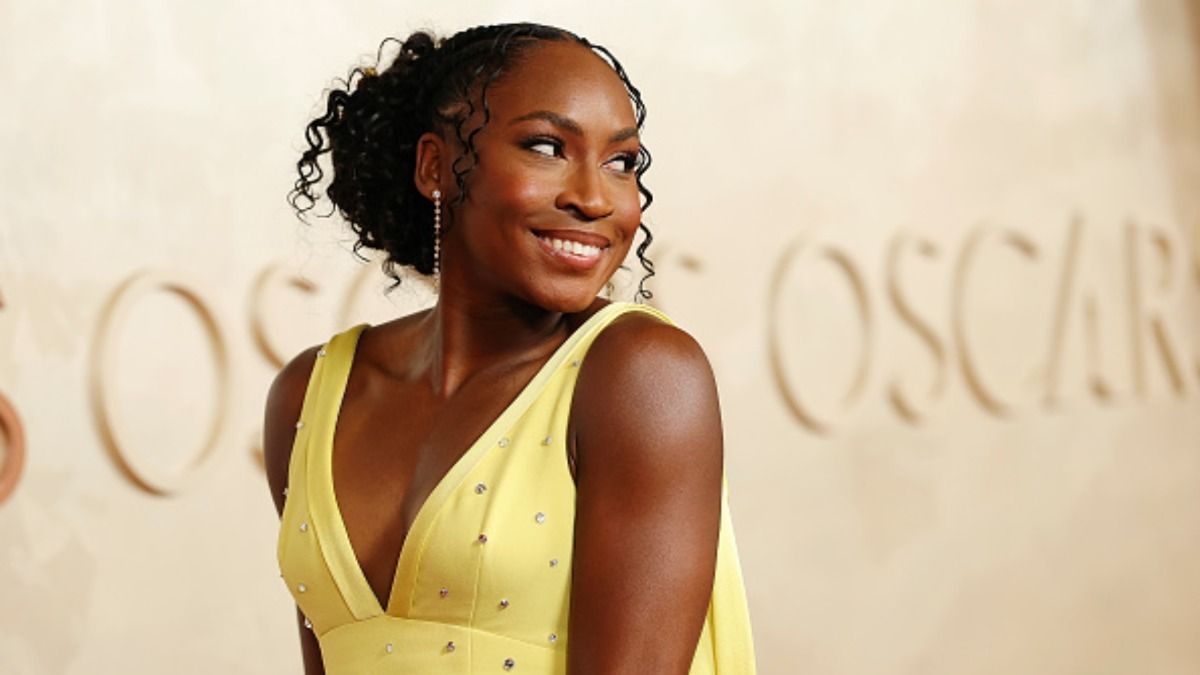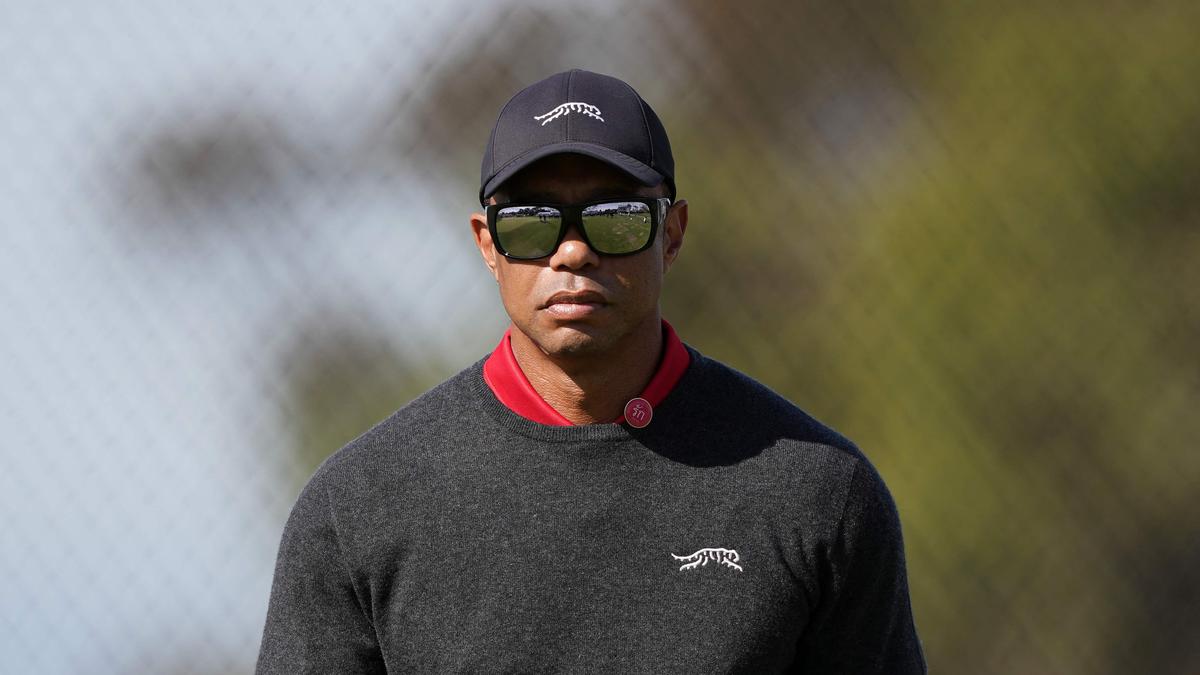It passed almost without comment last month in Melbourne that Jannik Sinner’s Australian Open title was the 60th men’s Grand Slam in a row won by a European.
The last non-European was Juan Martin del Potro, of Argentina, at Flushing Meadows in 2009. You have to go back another 28 events to find the name of Andy Roddick – the last American man to win a major title.
We take it for granted these days but the collapse of the United States as a tennis nation is extraordinary – especially as compared to the dominance that came before.
From the dawn of the Open Era in 1968 until Roddick in 2003, there were only six years in which an American man did not win a Slam. They won 52 out of 143 majors – and then zero from 88.
Of course, since 2003 Novak Djokovic, Rafael Nadal and Roger Federer had locked out almost everyone, not just Americans, but the malaise runs far deeper than that.
In February 1990, 14 of the top 30 were American, including eight of the top 10. In May 2021, the low point before a recovery began, for the first time in history there was not a single American man in the world’s top 30.
It is now 22 long years since the last American man won a Grand Slam, Andy Roddick on home soil in 2003

Since Roddick’s triumph, there have been 88 Slams without an American male winner

Since 2003 the US men have had to watch on as Europe have dominated the Slams
The US is a powerhouse which has run out of power, the Rip van Winkle of sleeping giants. There are signs that the giant is stirring – a flicker of the eyelid, a toss and a turn – but we will get to that later.
First let us examine why the slumber has lasted so long.
To answer that question, I spoke to Kent Kinnear, the head of men’s tennis at the US Tennis Association (USTA), and Scott Perelman, who has spent over 30 years coaching in the collegiate system, as well as six years on tour with former top-50 player Chris Woodruff.
Perelman has been with the University of Florida Gators since 2012 – playing a key role in the development of Ben Shelton, America’s next great hope at the age of 22 and ranked 13 in the world.
In order to understand how America’s dominance ended, we need to go back to how it began. ‘Where you want to start is the Nick Bollettieri Tennis Academy,’ says Perelman. ‘When you look at all these champions from the 80s and 90s, a lot of them came through the Bollettieri academy (now the IMG academy).’
In 1978 Bollettieri, a former paratrooper and dropout law student with modest playing and coaching credentials, opened an academy which changed the face of the sport.
His vision was ‘total immersion’: pairing the nation’s best coaches with the best young players, who would live on site. Andre Agassi described the academy as a ‘prison camp – like Lord of the Flies with forehands’ – but it worked.
‘Bring your best athletes, your best tennis players, your best coaches, have your best facilities, central location, and then: boom!’ says Perelman. ‘Top junior players were all funnelled there and you have Agassi, Jim Courier, and they’re feeding off of each other, beating up on each other.’

American men’s tennis has come a long way since the glory days, which ended with Pete Sampras (left) and Andre Agassi

The US has had a lot of promising talent come through, like Christopher Eubanks, but they still went 15 years without making a men’s Grand Slam final

Ben Shelton, ranked 13th in the world at just 22, is the next great hope for America
Bollettieri’s programme became a breeding ground for the new, modern style of ‘first-strike’ tennis, with big serves and forehands, often hit with far more top spin than ever before.
The winning formula had been found but there is no patent law in tennis and gradually the rest of the world caught on.
‘The sport became more international,’ says Kinnear. ‘When tennis became an Olympic medal sport at LA 1984, countries around the world started putting a lot more emphasis on tennis.’
The legend of Bollettieri spread and academies popped up all over the world, allowing other countries to centralise their talent. Meanwhile in America, rival academies emerged, dispersing players and coaches throughout the vastness of the country.
‘We’ve got a lot more people that can teach effectively and knowledgeably,’ says Perelman, ‘but we’ve spread ourselves out, versus having brought ourselves together, and the proof is in the pudding.’
Gradually, as tennis players across the world got fitter and more athletic they became better defenders, meaning the first-strike style was less effective. Perelman believes America stayed wedded to the old ways for too long.
‘This is what’s been going on in America for decades: “All you need is a big serve and a big forehand”,’ he says. ‘You had a generation teaching that Western forehand grip where you could jack the s*** out of the ball.
‘That’s a piece of what held us back, because we’re not teaching kids from the beginning to be classical tennis players.’

The likes of Rafael Nadal (left), Roger Federer (right) and Novak Djokovic locked out the world for decades – but the problem runs far deeper than that

Top American players such as John Isner have relied for too long on a booming serve
The predominance of hard courts in America contributed to this homogenisation of style. It is generally accepted that traditional clay is the best learning ground for tennis; the high and slow bounce places an emphasis on technique, athleticism and strategy over raw power.
On a hard court or ‘Har Tru’ American-style clay (which is faster than the real thing), a big serve and forehand can mask other weaknesses.
If you look at the Americans who had most success during the barren years – John Isner, Sam Querrey, Jack Sock – their games were based around that same old formula.
At this point it is worth addressing the question: why did all these problems affect only the men, while American women continued to deliver major titles?
Firstly, as Perelman puts it: ‘Take Venus (seven Slams) and Serena (23) out of it. And how is America doing? It ain’t all that impressive.’
One factor which affects American men more than women is the sense of competition from other major sports. For an athletic, talented girl, tennis remains the most attractive avenue, at least financially. For a boy the siren songs of the NFL, baseball and basketball are loudest.
Despite all this, as Perelman says, ‘American tennis is in an upswing.’ Taylor Fritz, at last year’s US Open, became the first American man to reach a Slam final since Roddick at Wimbledon in 2009.
There have been six appearances by American men in semi-finals since 2022, compared to two between 2010 and 2021. It feels as though a corner has been turned.

Taylor Fritz made the 2024 US Open final – the first American man to make a Slam final for 15 years – in the latest sign that things may be beginning to turn

But he was outclassed by Jannik Sinner at Flushing Meadows and still remains a way away from winning a Grand Slam

It’s no greener on the women’s side either, with only Serena (left) and Venus Williams truly breaking through this century
These green shoots of progress are just beginning to break the surface, but the bulbs were planted more than a decade ago.
‘In 2008-09, we came up with a teaching and coaching philosophy and opened it up to the country,’ explains Kinnear of the USTA. ‘Getting information out there: what’s happening in the modern game at the highest level and, if you trickle that down to 11, 12, 13-year-olds, what tools do they need in their toolbox?
‘What we don’t want is someone to be 22-years-old and they can’t volley. In this day and age the game has evolved so much that if you have any holes in your game, it’s going to get exposed.’
The USTA’s aim was to bring cohesion to a sprawling network of college programmes, private clubs and regional training camps – ‘It’s brought a lot of unity to the country,’ says Kinnear – and to equip juniors with the wider skillset required to win in the modern game.
It is the generation of kids schooled in this philosophy who are approaching their peak. Kinnear led the coaching of the 1997 and 1998 birth-year crop, including now world No 4 Fritz and No 10 Tommy Paul.
Fritz in some ways fits the American stereotype with his big serve and forehand, but his backhand, volleys and movement far outstrip his recent predecessors. Paul is a poster child for Kinnear’s ‘no holes’ game: excellent without being exceptional at every facet.
Those two lead the way and a queue is forming behind them. On the live rankings, there are set to be 11 American men in the top 100 next Monday and five are aged 24 or under. Frances Tiafoe, Seb Korda, Alex Michelsen and Brandon Nakashima all join Fritz, Paul and Shelton in the top 50.
These are signs that things are beginning to change; like the first tentative drops of rain that suggest a 22-year drought may soon be over.

Fritz and Tommy Paul won bronze in the men’s doubles at last summer’s Paris Olympics

Maryland native Frances Tiafoe, 27, is another great hope for success

Sebastian Korda has reached only one Grand Slam quarter-final at the age of 24
Venus deserves a proper send-off
A truly bizarre episode involving Venus Williams when Indian Wells announced the 44-year-old has been given a wildcard into next week’s draw, only for the woman herself to insist – at a speaking event in Denmark – that it was the first she had heard of it.
Was it a case of one of her team overreaching and signing her up? Or Venus changing her mind and for some reason not wanting to admit it?
Either way, Williams remains technically among the ranks of the professionals, even though she played just two matches last year, losing both, and has not been ranked inside the top 50 since losing to Coco Gauff at Wimbledon in 2019.
Every athlete has the right to decide how to bow out; even if that is to fade gradually and mysteriously into the ether.
But it would be a shame for a seven-time Grand Slam champion and iconic figure in the sport to drift towards retirement without ever having the send-off she deserves.
One of the wildcard spots at the US Open’s mixed doubles could be the ideal exit strategy.
One to watch
Victoria Mboko

When will 18-year-old Victoria Mboko’s sensational winning streak come to an end?
The Manchester Tennis Centre was the setting for the latest leg of the year’s most incredible winning streak.
The 18-year-old Canadian Victoria Mboko has played four tournaments on the ITF tour this year and won them all – that’s 22 matches in a row – without dropping a set.
A former top junior, Mboko has struggled with knee injuries over the last couple of years but looks to be ready to fulfil her potential.
How long can she keep winning? And how long until we see her on the WTA Tour?












